Advertisement
Trials evaluate safety and efficacy of new treatments
Advertisement
Cleveland Clinic is a non-profit academic medical center. Advertising on our site helps support our mission. We do not endorse non-Cleveland Clinic products or services. Policy
A 60-year-old woman presents with a severe rash on her face, arms and torso. She had seen physicians near her home in Dayton, Ohio, and was originally diagnosed with sunburn, though she reports not having spent much time in the sun. She felt that her condition continued to deteriorate, with her skin going from “red to violet” and the development of pain in muscles and joints. She came to Cleveland Clinic for a second opinion 11 months following the initial “sunburn” diagnosis. She was diffusely covered in rash and so weak that she was unable to walk.
We suspected dermatomyositis, which can be a challenge to diagnose, as it is often mistaken for lupus, eczema and other conditions. Many clinicians may never see cases like this.
The patient was hospitalized for five days, and was given very high doses of IV steroids, along with azathioprine and hydroxychloroquine. She was discharged home on those medicines plus oral steroids. At follow-up two months later, she showed only marginal improvement in the degree of rash and muscle weakness. She was still far from being adequately controlled. Over the next several months we tried a number of other medications, including mycophenolate mofetil and intravenous immunoglobulin (IVIG). IVIG, especially, added to her improvement. However, after all of those medications she still was not adequately controlled, as significant skin pain and itching persisted. She still had weakness compared to baseline, but we felt her myositis was controlled and weakness was related to previous myositis.
At this point, we enrolled the patient in our open-label trial of adrenocorticotropic hormone (ACTH) gel, which is a respiratory corticotropin injection. In the trial, the patient received twice weekly ACTH injections for six months, in addition to her other current medications.
While her dermatomyositis is not cured, with the addition of ACTH injections we were able to achieve and maintain excellent control. There is no active inflammation in her skin, her muscle strength is normal and we have been able to decrease the amount of systemic medicines she receives. Her quality of life has definitely improved.
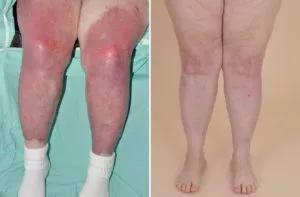
Left: Patient in 2015, before treatment. Right: Patient in 2016, after treatment.
Dermatomyositis is a very heterogeneous disease, with an annual incidence of 1 per 100,000, with a peak between the ages of 40 and 50. Dermatomyositis can be quite resistant to treatment, with long-term control frequently difficult to achieve. Symptoms, such as muscle weakness and skin eruptions, can overlap other systemic rheumatic diseases, including systemic lupus erythematosus and systemic sclerosis, among others. Certain patients with MDA-5 antibodies are at higher risk for developing interstitial lung disease. Patients should also be monitored for esophageal disease.
We are currently enrolling patients in three clinical trials.
NCT03181893: A Phase 2A, Double-Blind, Randomized, Placebo-Controlled Study to Evaluate the Efficacy, Safety and Tolerability of PF-06823859 in Adult Subjects with Dermatomyositis. This is the first medicine specifically designed to treat dermatomyositis.
Inclusion criteria:
Exclusion criteria:
NCT02245841: Efficacy and Safety of H.P. Acthar Gel for the Treatment of Refractory Cutaneous Manifestations of Dermatomyositis. This trial is designed for refractory cutaneous dermatomyositis, which we define as having failed at least two systemic medications typically used to treat dermatomyositis.
Advertisement
Inclusion criteria:
Exclusion criteria:
NCT03813160: A Multicenter, Randomized, Double-Blind, Placebo-Controlled Phase 3 Trial to Evaluate Efficacy and Safety of Lenabasum in Dermatomyositis. This phase three trial is of an oral medication that is a cannabinoid receptor agonist, from a company named Corbus.
Inclusion criteria:
Advertisement
Exclusion criteria:
Dr. Fernandez is Director of Medical Dermatology.
Advertisement
Advertisement

Stress and immunosuppression can trigger reactivation of latent virus
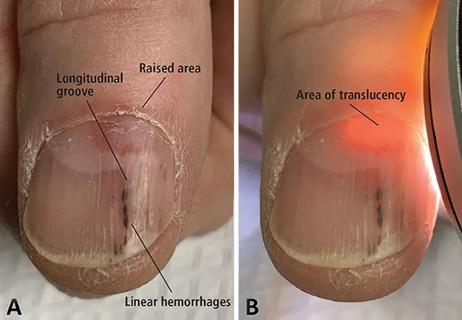
A case report of a thumbnail deformity
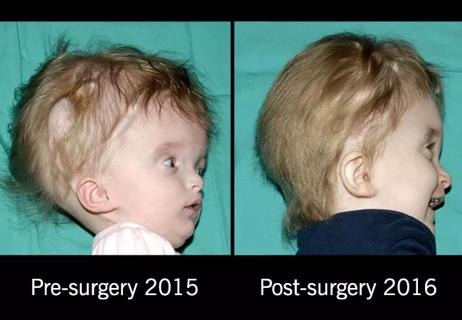
Multidisciplinary team of plastic surgeons and neurosurgeons correct severe, complex head deformity
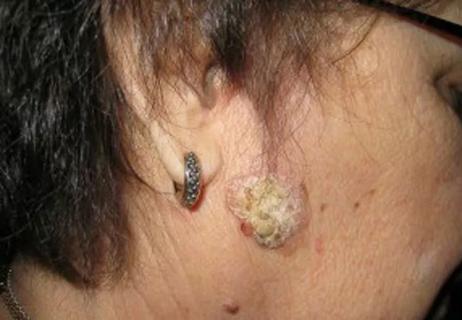
Cutaneous complications common post-transplant
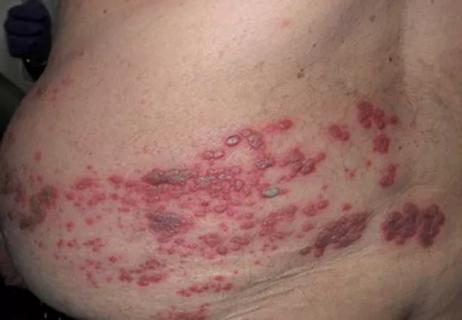
Cutaneous complications common post-transplant
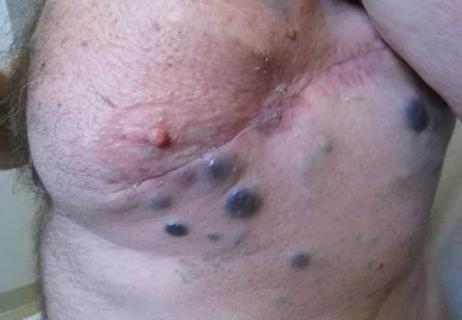
Cutaneous complications common post-transplant

Cutaneous complications common post-transplant
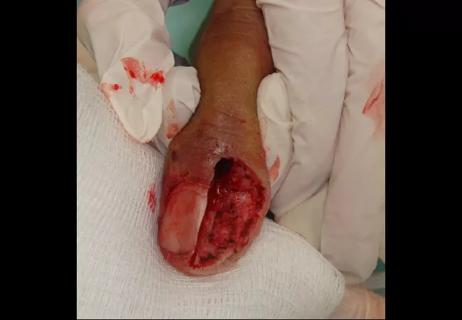
Two cases of a rare cancer of the sweat glands